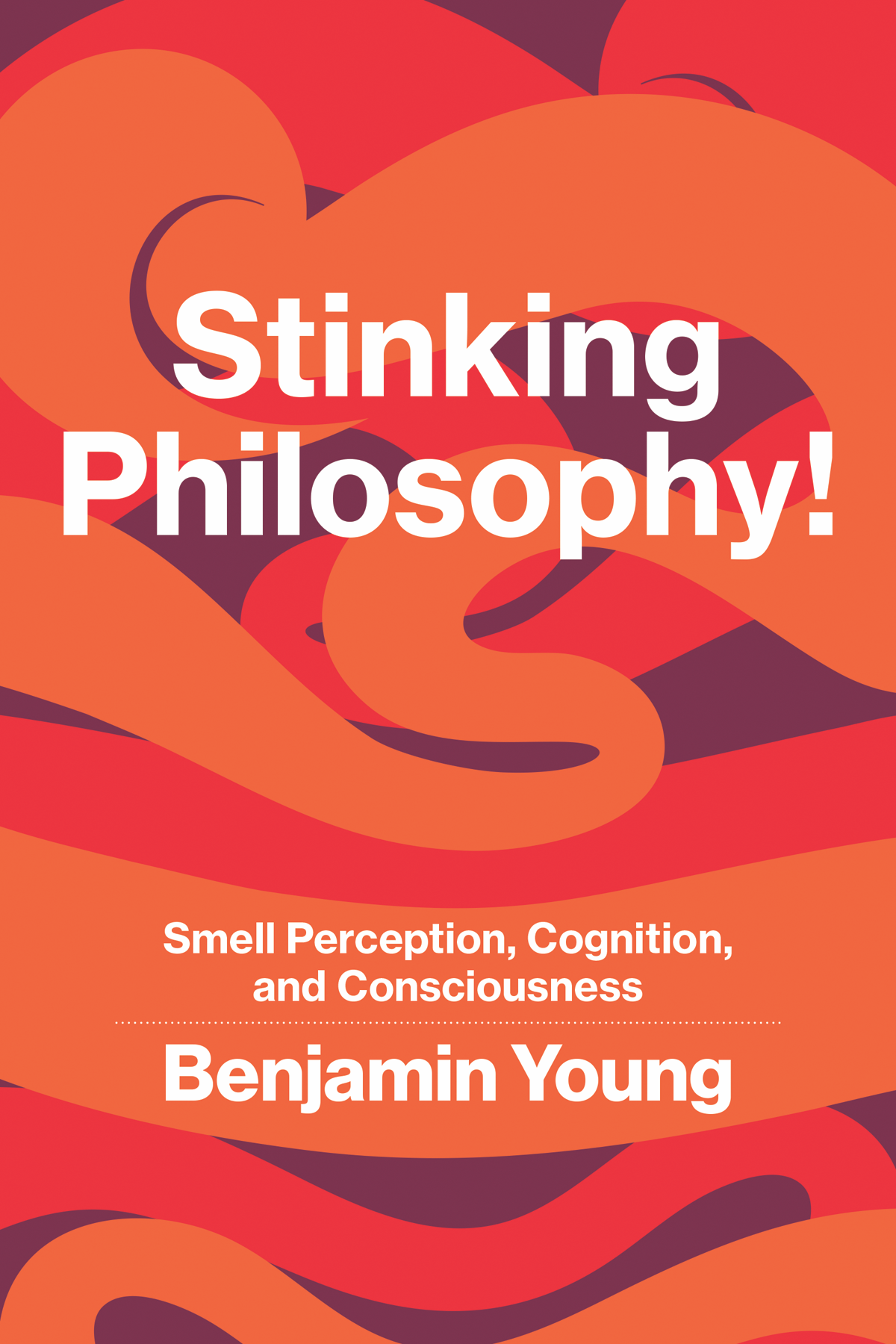
Words are a poor medium for conveying smells—there is something qualitatively missing in writing about smells that leaves out the ephemeral nature of these sensory entities. Despite this obstacle, those of us who study olfaction have dedicated our careers to researching and writing about how the nervous system perceives smells and the nature of olfactory consciousness.
The following excerpt from Chapter 2 of my book “Stinking Philosophy!” asks a simple question: What are smells? One would assume we know the answer, yet despite the best efforts of chemoscientists and philosophers, it is still an open area of research. What I offer is my attempt at grappling with what I argue is not a singular issue but a host of nested questions. The selected portion here focuses on just one small part: what determines the olfactory quality of smells.
This excerpt assesses the methodologies used to identify the olfactory quality of single odorants and provides a starting point for exploring the complex nature of smell stimuli and perception. Hopefully, this initial whiff will perk your curiosity to download the open-access version of the book and read further. The book weaves together more than a decade’s worth of research on olfactory philosophy, exploring how we perceive, mentally represent (Chapter 4), communicate about (Chapter 5) and are conscious of (Chapters 6 and 7) smells.
What are smells?
We are all overly familiar with the initial setup of philosophical discourses starting with a “What is x?” question, and in this instance, the philosophy of smell does not disappoint. The initial familiar setup of attempting to clarify the nature of smells conceptually serves as the focus of this chapter. The centrality of the question ‘What are smells?’ cannot be escaped when beginning any exploration of how we perceive, represent and are conscious of smells. And while such an opening chapter might seem derivative given Keller’s (2017) and Barwich’s (2020) similar starting points and our agreement that a simple answer is not forthcoming, I differ in thinking that the question itself is not singular. We cannot understand what smells are without giving a comprehensive account of a set of issues, all of which determine the nature of smells.
The study of smell is still rather nascent, making the initial question of the chapter pertinently tractable. Yet, as with many aspects of olfactory research, we often find ourselves stuck in the middle because so many areas are still at an exploratory stage. Previously, I have argued (Young, 2016, 2019a, 2023) that a comprehensive theory of smell must answer the following three nested questions:
- What accounts for the olfactory quality of a smell?
- What are the odorous objects represented within our olfactory experiences?
- What are the distal entities that we perceive as smells?
The theory I have been developing addresses each of these questions by adverting to the molecular structure of chemical compounds composing an odor plume within a background array of a smellscape (Young, 2016, 2019a, 2019b, 2020). Earlier versions of my theory were developed to account for how the olfactory quality of an odor is determined and employed to generate odor identity. In progressing this account, the chapter not only attempts to handle question 1 in relation to accounting for the determinates of the olfactory quality of complex odorant mixtures but also looks at how what we consider to be the object represented within smell experiences must be expanded beyond just the olfactory quality of smells. The seeming simplicity of the initial question ‘What are smells?’ hides that it is a rather complex set of issues requiring a multifaceted set of answers. The chapter aims to give a summary of what I think are the best answers to questions 1–3 as the initial starting point for exploring what smell has to offer philosophical research, as well as building upon my previous treatments of the nature of odor objects. Smells are complex perceptual objects that not only smell but also have perceptible properties, including their concentration, intensity and valence.
The Olfactory Quality of Single Odorants (Question 1: Beginnings)
Our philosophical starting point is often to begin with what is presented to us phenomenologically within experiences as given and then to reify this through conceptual analysis. Yet, our everyday olfactory experience and ordinary linguistic practices of referring to smells generate methodological issues at the outset of theorizing about the olfactory quality of smells. Our everyday practices, it has been argued, are inaccurate in determining the nature of smells (Young, 2016), our conscious experiences often incorrectly identify or fail to identify smells (B. C. Smith, 2023), and our overall linguistic competence in identifying smells by name is extremely limited (Young, 2019d). Thus, even the initial question of what method should be used in determining the olfactory quality of odorants is open for debate.
There are several possible measures of identifying the olfactory quality of a single type of odorant. Naming odors in terms of lexical tags might seem like the most intuitive means of determining identity conditions, but as noted in Young (2019d), humans are woefully bad across developmental stages at identifying smells by name, which might be explained by the olfactory system lacking connectivity with linguistic processing centers in the brain, as well as implementing an incompatible compositional format from our semantic conceptual repertoire mediated by vision (see chapter 4). But even if we relax the means of identification from matching exacting lexical tags to referents and instead employ the conceptual categorization of odors based on a typicality relation among members of some given type, we will face difficulties both in specifying the determinate of the typicality relations (Young, 2016) and in determining typehood of odor categories (Gilbert, 2008; see chapter 5). Using a measure of subjective recognition of an odorant’s odorific quality will face similar issues, because recognizing a token odorant as being a given type of odor will require knowledge of the conceptual space of odors and how to judge the resemblance relations between and within an olfactory concept’s instances.
The drawbacks of using high-level cognitively mediated means of identification might make it tempting to overcompensate in the opposite direction and determine odor identity in terms of stimulus detection. Mere detection might allow us to show that a gaseous stimulus is being treated as an odorant by the olfactory system and transduced as an odor, but that will only get us so far. Olfactory receptor neurons within the olfactory epithelium detect even the onset of odorless airflow (for a full coverage of the role of the motor-sensory systems in relation to smell, see Young, 2017). And whatever smells are, they must smell!
What is needed is a means of determining how token odors can be individuated and demarcated as a smell of a certain kind discrete from others. Thus, it is arguably the case that perceptual discrimination is the most viable measure for generating odor identities (Keller, 2017; Young et al., 2014). Our ability to discriminate between serially presented odorants provides the most accurate method for generating odor identities, because there must be some qualitative character about the stimuli in light of which the subject is able to judge them as being sensorily distinct. Using discriminability as the primary means of determining olfactory quality identification has the further strength of allowing us to determine odor identity independent of conscious awareness. Most of our olfactory perceptual states occur in the absence of conscious awareness of the odor and our attention to the odorant plumes traversing our nostrils (Yeshurun & Sobel, 2010; Young, 2014; chapter 6). Methodologically, determining odor identity in terms of an individual’s judgments of just-noticeable differences between odorants provides the most promising method for identifying the olfactory quality of a smell because it allows a means of determining odor identity independently of conscious awareness, as well as a means for accommodating individual differences.
Embracing perceptual discrimination (using olfactory quality) between odorants as the primary means of determining odor identity doesn’t yet provide an explanation of what generates an odorant’s olfactory quality because it only supplies us with the means by which we can judge that a given odorant has an odor that is different qualitatively for the subject from another odorant. Nevertheless, this starting point sets up the further question of what it is about the discriminable properties of an odorant from which olfactory quality arises. Considering odorants in terms of their properties as chemical stimuli provides the next step in uncovering the determinates of olfactory quality based on their material constitution.
We can specify the set of possible odors, for human beings, by noting the size of odorant molecules—not larger than 20 chemical groups and no smaller than 3—that are biologically detectable by our olfactory system. The general requirements for a material object to be classed as an odorant that we can perceive as having an odor is that it should be volatile and hydrophobic and have a molecular weight lower than about 300 daltons (Ohloff, 1986). Specifying the determinates of olfactory quality based on an odorant’s chemical character suggests the molecular structure theory, which claims that what we perceive as odors are the molecular structure of chemical compounds within odor plumes. What we smell is the three-dimensional structure of molecular compounds as formed by their constituent chemical groups. Empirical evidence supporting this claim is provided by the leading scientific theories of primary olfactory transduction, our physiological olfactory capacities, psychological olfactory abilities, and animal models of olfaction (Young, 2016, 2019a, 2020).
The central tenet of molecular structure theory (MST) is that olfactory quality can be primarily accounted for in terms of the molecular structure of chemical compounds within the odor plumes. Molecular structure might be the primary determinate of olfactory quality, but the concentration of the odorants within the odor plume also determines olfactory quality in a fashion that requires taking the constituent structure of the plume’s token odorants and their ratio and concentration into account (Young et al., 2020). In some binary mixtures, changes in concentration yield perceived differences in odor quality (Asahina et al., 2009; Malnic et al., 1999; McNamara et al., 2007; Pause et al., 1997). However, shifts in olfactory quality as brought about by changes in concentration levels are the exception and not the norm (Cleland et al., 2012; Gross-Isseroff & Lancet, 1988; Uchida & Mainen, 2007). Learned concentration invariance and the general lack of shifts in olfactory quality as brought about by changes in concentration levels explain the dearth of literature. Nevertheless, humans use a larger set of descriptions of odor qualities for monomolecular structures with greater structural complexity (Kermen et al., 2011), which can be taken as evidence that molecular complexity plays a causal role in generating the reported odor quality even in the absence of additional odorants.
While the molecular structure of the chemical compounds composing the odor are claimed to determine olfactory quality, this is, of course, against the background of individual olfactory receptor neuron (ORN) receptivity and the properties of the stimulus as a distal entity within a gaseous plume. Because of receptor genetics differences, individuals will have dissimilar receptivity to the same range of odorants. Genetic variance generates ORNs with alternative sensitivity ranges. Thus, individuals perceiving the same odorant will experience it as having different qualities. By relativizing odor quality identification based on epistemic concerns to the receptivity of the olfactory system, odor quality variance is expected and predicted.
Despite MST drawing upon a long history of research on stimulus odor relations (SOR) (Rossiter, 1996), primary sensory transduction within olfaction is still a black box. So, I will leave the exact nature of the structural properties of the stimulus responsible for determining olfactory quality as an open matter. SOR is certainly a useful framework for supporting MST. However, it is important to note that MST does not claim that olfactory quality is not wholly determined by the olfactory stimulus in a causal feedforward fashion. The olfactory quality of a smell is not simply determined just by the odorants’ material properties as transduced at the receptor site based upon some manner of an isomorphic mapping relation between chemical composition and odor qualities. We should not expect the chemical properties of the odorants responsible for odor quality to correspond directly with our expectations from the methods of organic chemistry, as the kinetics of odor stimuli depend on both physical and chemical parameters. In fact, the relevant properties might be determined based on biosteres relative to the function of sensory neuron receptivity (Tahirova et al., 2019). Additionally, it might be more fruitful to look at SOR in terms of a multiple-to-multiple relational structure that is also determined based on the psychochemical properties of the stimulus in combination with the use of descriptors for the perceived odor (Licon et al., 2019).
The merit of MST is that it can be used as the starting point for further explanations in providing the determinates of olfactory mixtures and concentration invariance, as well as how we identify smells as odor objects, and perceive these against a background array of odors within a smellscape. Maybe the initial starting point of the theory is underdetermined from the evidence, and future research is required to provide validity, but its reliability might be judged by its explanatory value in generating a comprehensive account of what smells are. However, everything that has been claimed thus far depends upon only considering cases of isolated types of singular odorants. Yet, naturally occurring smells are composed from a large number of different types of odorants that we learn to group together into mereologically complex, changing and repeatable persisting odorous objects within the environment. Thus, the next few sections will focus on fleshing out the comprehensiveness of my account by considering olfactory mixtures, how the object of olfactory perception as smells must encompass properties beyond olfactory quality, and, lastly, how we distally perceive smells as particulars within smellscapes.
Adapted from “Stinking Philosophy! Smell Perception, Cognition, and Consciousness,” by Benjamin Young. Reprinted with permission from The MIT Press. Copyright 2024.






